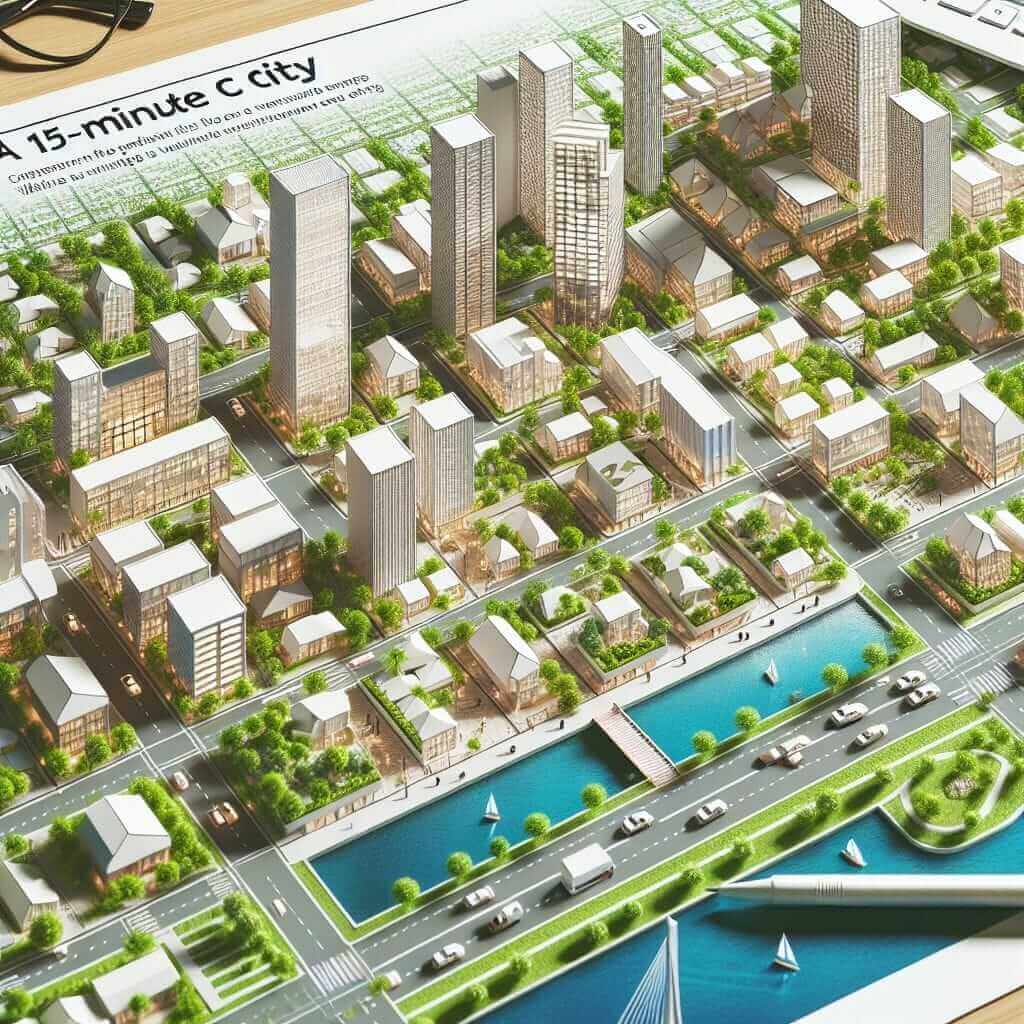The Reading section of the IELTS exam is designed to assess a variety of reading skills, including reading for gist, reading for main ideas, reading for detail, understanding inferences and implied meaning, and recognizing a writer’s opinions, attitudes, and purpose. The topic “How does the rise of remote work affect urban planning?” is increasingly relevant given the global shift towards remote work, accelerated by the COVID-19 pandemic. This subject not only addresses immediate societal changes but also predicts future trends, making it a potentially recurring theme in IELTS exams.
Reading Passage on “How Does the Rise of Remote Work Affect Urban Planning?”
Passage
The rise of remote work is reshaping urban planning in profound and lasting ways. As employees are no longer anchored to a specific location for their daily commute, the necessity for densely populated work-centric urban areas diminishes. This shift is fostering the development of more versatile, mixed-use neighborhoods. Urban planners are now focusing on creating communities where residential, commercial, and recreational spaces coalesce seamlessly.
Previously, urban planning revolved around hierarchical zones, with central business districts (CBDs) playing a pivotal role. Today, the decline in office space demand has led to a repurposing of these areas. For instance, vacant office buildings are being converted into residential units, co-working spaces, or green parks to accommodate new community needs.

Remote work also impacts transportation infrastructure. With fewer people commuting daily, there’s a noticeable reduction in traffic congestion and pollution. Consequently, cities are re-evaluating their public transport strategies, investing more in bike lanes, pedestrian pathways, and electric vehicle charging stations, emphasizing sustainable mobility over traditional car-dependent models.
The social fabric of urban areas is evolving too. Remote work enables people to live farther from their workplaces, leading to the rise of “15-minute cities” where all essential services and amenities are accessible within a short walk or bike ride. This model promotes local economies and enhances the quality of life by reducing travel time and increasing leisure time.
However, this transition is not without challenges. Planners must address the digital divide, ensuring robust internet access across all urban and rural areas to support remote work. Additionally, the repurposing of commercial spaces must be managed thoughtfully to retain economic vibrancy and social cohesion.
Questions
Multiple Choice
-
What is a key urban planning change due to remote work?
A. Increased focus on central business districts
B. Development of mixed-use neighborhoods
C. Construction of more office buildings
D. Decrease in residential areas -
How has remote work affected transportation infrastructure?
A. Increased traffic congestion
B. Emphasized sustainable mobility
C. Reduced need for public transport
D. Investment in car-dependent models
True/False/Not Given
- Urban planners are now prioritizing car-dependent models.
- Remote work leads to the rise of “15-minute cities.”
Matching Information
-
Match the following impacts of remote work with their descriptions:
- A: Repurposing office spaces
- B: Sustainable mobility
- C: Digital divide
- D: Mixed-use neighborhoods
Descriptions:
- Development of communities combining residential, commercial, and recreational spaces.
- Ensuring equal internet access for remote work feasibility.
- Converting unused office buildings for new uses.
- Focusing on pedestrian pathways and bike lanes.
Summary Completion
Complete the summary using words from the text.
Remote work is changing urban planning significantly. Declining demand for office space is leading to the of CBDs. Transportation is becoming more , with a focus on sustainable mobility. The concept of “15-minute cities” is one where all essential services are within a short distance. Despite these changes, challenges such as the need careful management.
Answers
- B
- B
- False
- True
-
- A: Repurposing office spaces – Converting unused office buildings for new uses.
- B: Sustainable mobility – Focusing on pedestrian pathways and bike lanes.
- C: Digital divide – Ensuring equal internet access for remote work feasibility.
- D: Mixed-use neighborhoods – Development of communities combining residential, commercial, and recreational spaces.
Summary Completion:
Remote work is changing urban planning significantly. Declining demand for office space is leading to the repurposing of CBDs. Transportation is becoming more sustainable, with a focus on sustainable mobility. The concept of “15-minute cities” is one where all essential services are accessible within a short distance. Despite these changes, challenges such as the digital divide need careful management.
Analysis and Lessons Learned
One common mistake is not understanding the implications of remote work on different aspects of urban planning. Students should pay attention to keywords and their context to infer the right answers.
Vocabulary:
- Versatile (adj.): /ˈvɝːsətaɪl/ – adaptable, flexible
- Hierarchical (adj.): /ˌhaɪəˈrɑːrkɪkl/ – arranged in order of rank
- Repurpose (v.): /rɪˈpɜːrpəs/ – adapt for a new use
- Fabric (n.): /ˈfæbrɪk/ – underlying structure or foundation
- Digital divide (n.): /ˈdɪʤɪtl dɪˈvaɪd/ – gap between those who have access to modern information and communication technology and those who don’t
Grammar:
- Passive Voice: Used to emphasize the action rather than the subject. Example: “This shift is fostering the development of more versatile neighborhoods.”
- Relative Clauses: Useful to add extra information about a noun. Example: “Communities where residential, commercial, and recreational spaces coalesce seamlessly.”
Recommendations
To excel in the Reading section, practice with diverse topics and focus on understanding the context and main ideas. Pay close attention to common question types and develop strategies to tackle each effectively. Improving your vocabulary and grammar will also enhance comprehension and accuracy.